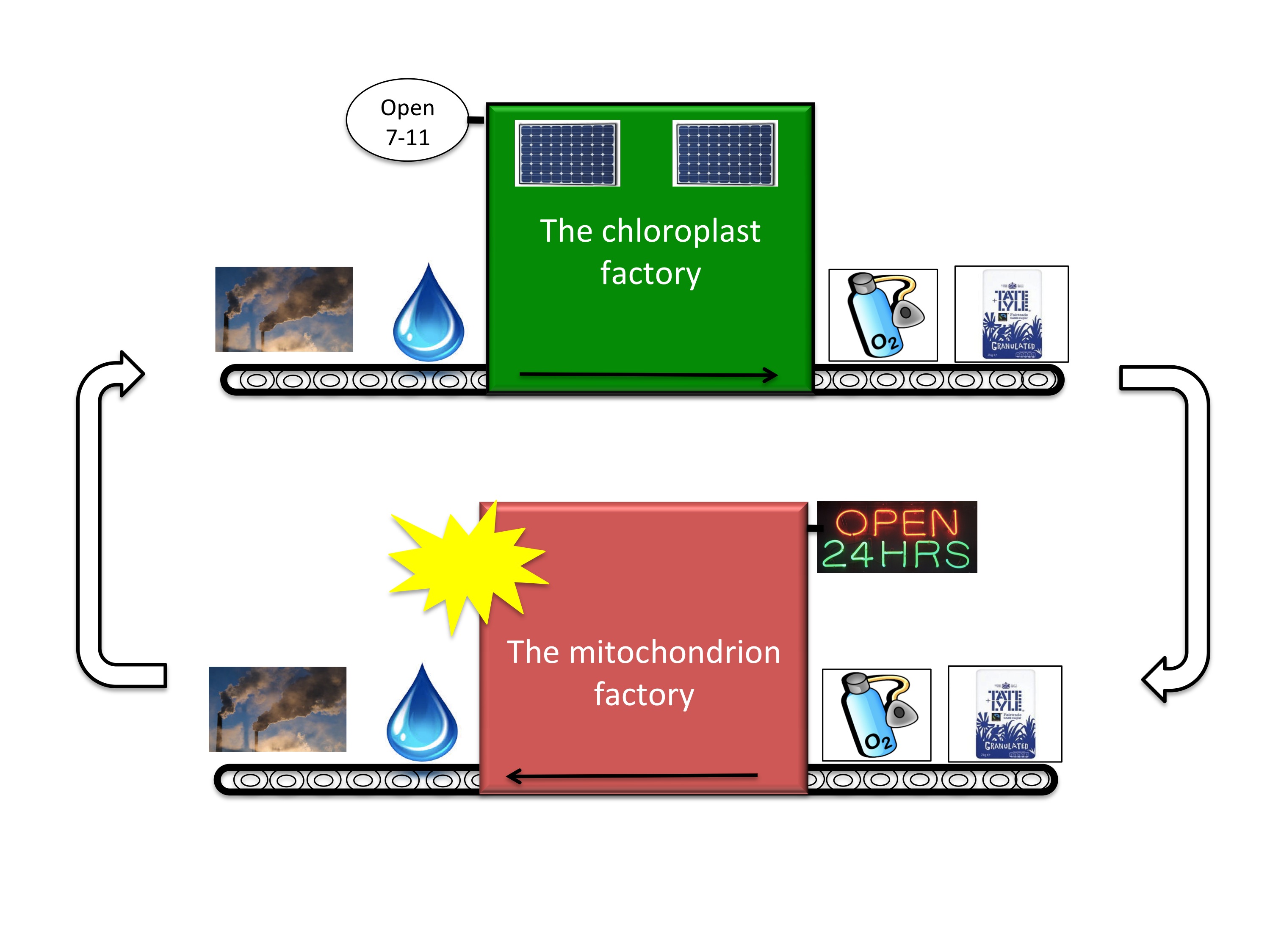Photosynthesis teaching resources
Worksheets and lesson ideas to challenge students aged 11 to 16 to think hard about photosynthesis (GCSE and Key Stage 3)
Overview: photosynthesis is perhaps the most fundamental endothermic process on the planet, but it is often a difficult topic for students (see video of MIT graduates struggling to explain where wood comes from). Some of this confusion stems from the different and incorrect ways we try to define what the process does – to create energy, to capture the sun’s energy, to make glucose. I find it helps to simply describe photosynthesis as the process through which the plant produces its own food. This makes it clear that plants still need to respire. You may find that teaching respiration first in plants, as opposed to animals, avoids some of this confusion as photosynthesis and respiration can be considered at the same time. Stress the fact that the mass of a plant comes from the invisible carbon dioxide and without plants, our lives would be over.
Key concept: photosynthesis is the process by which plants and other photosynthetic organisms make their own food (an energy store) from carbon dioxide and water using the energy from sunlight.
Linked knowledge: rates of reaction; plant cells; energy transfer; food; chemical equations
Misconception [scientific idea]: photosynthesis is the plant’s type of respiration [plants photosynthesise and respire]; plants get their food from the ground [plants produce their own food via photosynthesis – the mass mainly comes from carbon dioxide]; plants acquire food as they grow [plants produce their own food]; gases such as carbon dioxide do not have a mass [gases have a mass e.g. solid rust is formed from iron and oxygen gas; plants photosynthesise for humans [plants need to photosynthesise to make their own food – oxygen is a waste product]. Check out this great quiz from SAPs.
Teaching resources
 Where to start?
Where to start?
Ask students where sugar comes from. If you can get hold of a bag of sugar and a sugar beet bring it to class. You could do a quick poll asking where your students get their food from, then pose the question, where does a plant get its food from? It’s not Tesco nor the ground!
This video, involving the dehydration of sucrose, helps students make the link between carbon captured in plant sugars and carbon dioxide from the air. All living organisms are essentially walking, talking blocks of carbon. This demonstration must be carried out in a fume cupboard.
Practical to illustrate the concept
Prove to students that the glucose made by photosynthesis is then converted into starch and that light, carbon dioxide and chlorophyll are needed for photosynthesis.
Understanding the equation for photosynthesis
Activity to explore what students know already about the equation for photosynthesis. This activity helps students connect the symbol equation to what they know about the substances and processes involved. This could be used at the beginning and end of a teaching sequence on photosynthesis. You may want to begin this activity by giving students a grape to taste so they get the idea that photosynthesis makes sugar. (PDF)
Uses of glucose by plants
GCSE worksheet imagining a world without plants: uses for glucose activity. Students consider how plants use glucose produced by photosynthesis. We think about how humans use plants and students write a paragraph describing what their life would be like without plants. You may want to structure this task, using ideas from here about writing in science. The goal of this activity is for students to consider the importance of photosynthesis to both plants and humans. (PDF)
Plants photosynthesise and respire
Key Stage 3 worksheet on respiration and photosynthesis. This simple activity asks students whether they understand the subtle but important differences between photosynthesis and respiration. Students discuss in pairs the question: do plants respire? (PDF)
Comparing photosynthesis with respiration
Key Stage 3 and GCSE activity looking at the relationship between respiration and photosynthesis. Mitochondria and chloroplasts are compared to factories to help students understand the relationship between the products of photosynthesis and the reactants of respiration. This worksheet can also be used to help students evaluate the use of models to teach scientific processes. (PDF)
Limiting factors in photosynthesis
GCSE worksheet on limiting factors in photosynthesis. Liebig’s barrel is an excellent model to help students understand the concept of limiting factors in photosynthesis. Students should already have been introduced to limiting factors and photosynthesis before they meet this analogy model. Students identify the different features of the model and then complete the blank template to help identify analogous and non-analogous features. Image source. (PDF)
Function of photosynthesis and it’s relationship to respiration – the Green Child
Key Stage 3 creative writing activity on the Green Child and photosynthesis. Students use their imagination to write a story about a green child that can photosynthesise. This approach can support student motivation and lead to deep thinking about the ideas of photosynthesis and respiration by encouraging students to make and break connections between these two processes. (PDF)
Going deeper
- What role did photosynthesis have in the evolution of multicellular organisms?
- What is the difference between rate and time?
- What is the endosymbiosis theory and why was it important in the evolution of plants?
- Give other examples of limiting factors in science.
